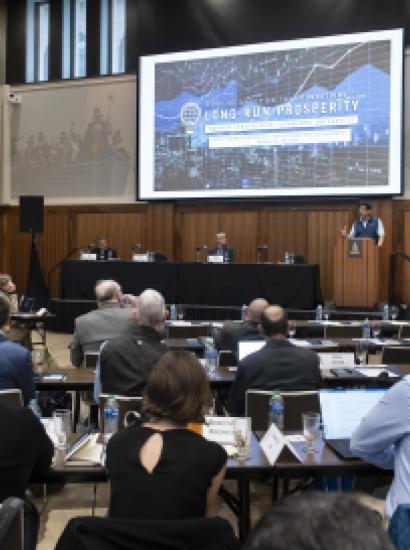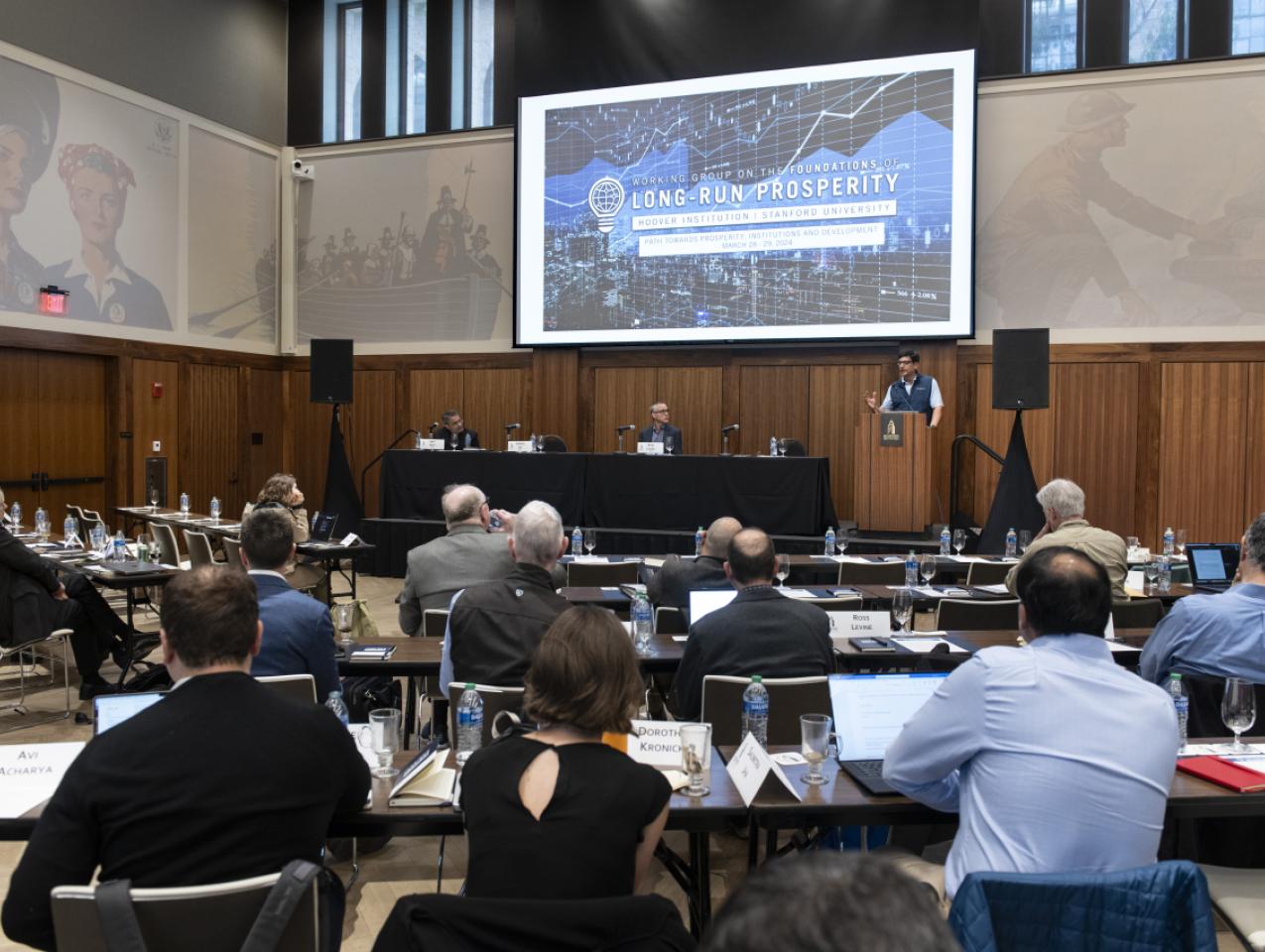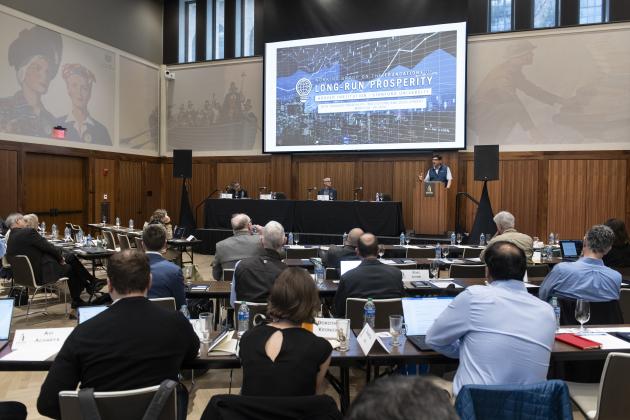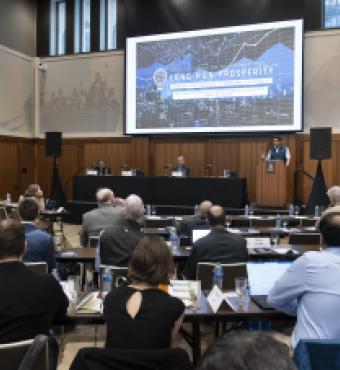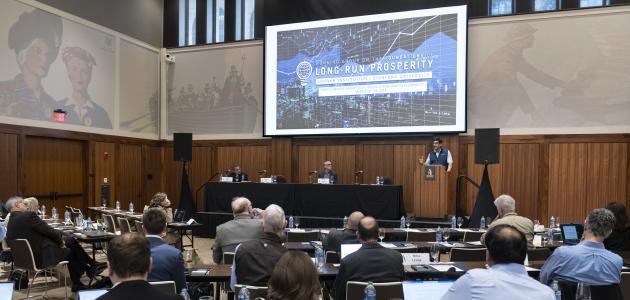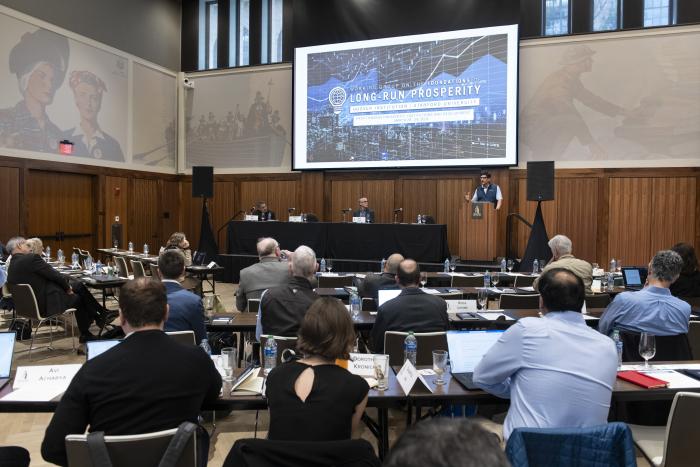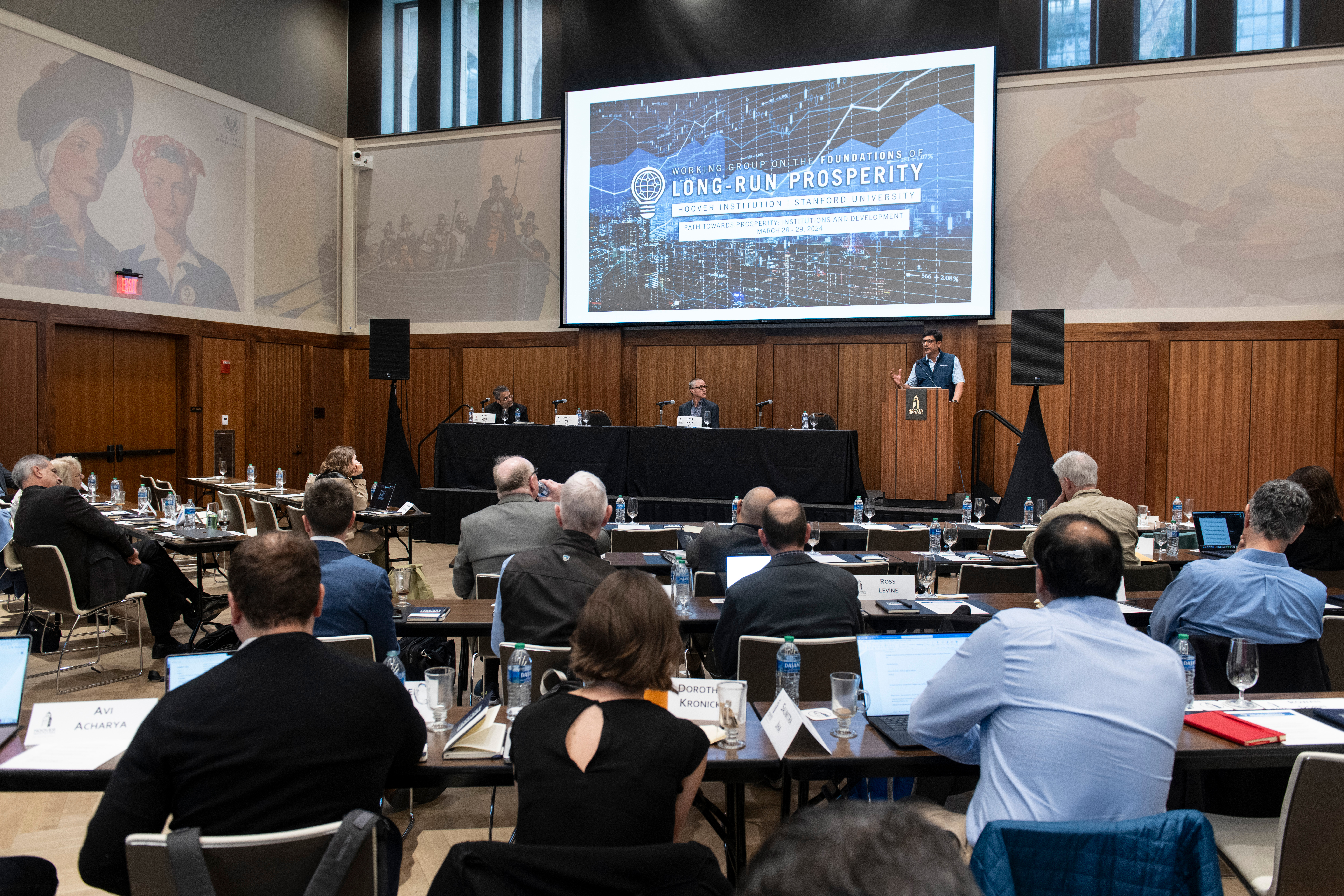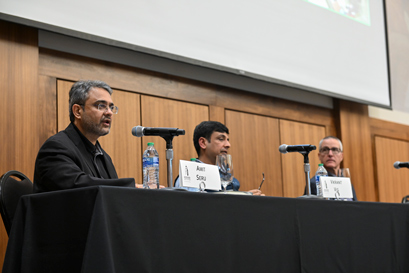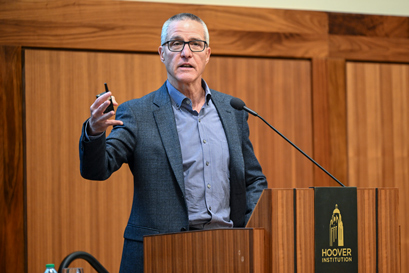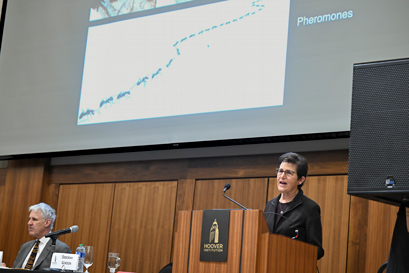A Tale of Two Colonies
Around two hundred years ago, Liberia was established with one of the most egalitarian constitutions in the world. Meanwhile, England sent hundreds of thousands of convicts to penal settlements in Australia, with law and order doled out by the British army unit that guarded them. No contemporary would have guessed that the fates of the two settlements would dramatically reverse, with Australia boasting one of highest incomes in the world and Liberia remaining among the poorest, most underdeveloped countries.
In his opening remarks at the Path Towards Prosperity: Institutions & Development conference, Stephen Haber, Peter and Helen Bing Senior Fellow at the Hoover Institution, presented the aforementioned historical puzzle before the conference participants, contrasting the divergent paths of the two famous colonies. Haber cochairs the Working Group on the Foundations of Long-Run Prosperity, which convened the conference at Hoover Institution on March 28–29, 2024, to examine the factors that impact such development trajectories.
A hallmark of the Foundations of Long-Run Prosperity conference series is the multidisciplinary nature of the research presented and debated. The conference featured several papers spanning the disciplines of political science, economics, history, and evolutionary biology. The topics, ranging from real estate regulations to the survival of ant colonies, all centered on the question of how formal and informal institutions can enable human societies spur economic growth and prevent decline.
Moody’s Ratings and the Development of Financial Markets
Securities ratings were one of the most impactful financial innovations of the twentieth century. In 1909, financial analyst John Moody published a book that rated railroad bonds in letter grades based on his assessments of their quality and credit risk. Carola Frydman of Northwestern University, in a joint study with Asaf Bernstein and Eric Hilt, traces the history of security ratings, an important institutional innovation that supported the development of US financial markets.
The authors reveal that the publication of Moody’s original volume made it easier for investors to buy and sell corporate bonds by bridging the information gap regarding bond quality among all investors. They further indicate that bonds that received a worse-than-expected rating were perceived to be riskier by investors, which was reflected in higher rates of return paid to the holders of these lower-rated bonds. Even though Moody’s ratings could be reconstructed from publicly available data, these ratings nonetheless enabled easier processing of complex data by investors to inform their decision-making.
Learn more about the findings and policy implications in Frydman’s research brief.
Crony Capitalism: A Path to Middle Income?
While much research has been undertaken to explain the divergence between low- and high-income countries, the political conditions that lead countries to develop into middle-income economies—and stagnate there—are not yet well understood. Alexander Lee of Rochester University, Avidit Acharya, and Stephen Haber address this gap in knowledge.
They indicate that numerous low-income countries have transitioned into middle-income countries under systems of economic favoritism, when a ruler only allows a select group of politically connected firms to operate. While this is in stark contrast with the universal property rights and limits on executive power associated with strong economic growth, they find that engaging in imperfect “crony capitalism” yields better economic outcomes than a completely state-run system in which no firm’s property rights are protected. These findings highlight an important moral and political issue: it may be better for rulers to pursue economic development with imperfect and “unfair” institutions rather than to let their countries languish as low-income countries with decreased welfare for citizens.
Learn more about the findings and policy implications in Lee’s research brief.
Unearthing the Histories Embedded in US Bonds
Most Americans view bonds as a safe, straightforward investment. While this may be true, bonds are more than a financial instrument; they also constitute unique evidence in the study of economic history. The manner in which bonds were designed and issued offers an important lens through which to understand the federal government’s policymaking, from the time of the Founding Fathers until the present day.
Thomas Sargent, senior fellow at the Hoover Institution, presented an overview of an ambitious project (a joint study with George Hall of Brandeis University) to collect information on all securities issued by the US federal government, beginning with the American Revolutionary War. With this data, they reconstruct the dynamics of the US federal debt and taxes between 1775 and 2024. The authors examine the fiscal-monetary responses of the US government to various crises in American history and shed light on the development of fiscal and monetary history of the US.
Learn more about the findings and policy implications in Sargent’s research brief.
What Can We Learn from Ants?
Compared to other species, prosperity in human societies takes on a distinct meaning. Nonetheless, through her work of studying colonies of harvester ants in Arizona, Stanford evolutionary biologist Deborah Gordon uncovers insights that can inform our society’s struggle to flourish in an ever-changing environment.
For ants, prosperity equates to survival. In a desert, each colony faces a trade-off in allocating energy: ants lose water to evaporation when they leave the nest to forage for food but are able extract water from seeds when they succeed in collecting them. Gordon’s research reveals that competing ant colonies employ different strategies to take on the environmental challenge of droughts, with a few opting to reduce foraging activities to conserve water and others continuing on despite increased temperatures and scarcity of available food. It turns out that the colonies that conserve water are more likely to establish daughter colonies, thereby highlighting the importance of passing down behaviors and technologies that enhance the likelihood of survival.
Gordon’s insights regarding the ant colonies’ success in passing down survival-enhancing behaviors can inform the steps humans could take in adapting to evolving social, economic, and climatological environments.
Reforming US Commercial Land Use Regulations Could Increase GDP
At the end of Sand Hill Road in Menlo Park, California, just a stone’s throw from remarkably important venture capital firms, is farmland where cows graze. What are cows doing on what is perhaps the most valuable commercial land in the United States?
Hoover Institution senior fellow Ohanian draws our attention to this puzzling phenomenon in a paper that examines the potential effect of deregulating commercial land use on economic activity, coauthored by Fil Babalievsky, Kyle F. Herkenhoff, and Edward C. Prescott. However, the study of land-use regulations poses an empirical challenge: zoning codes tend to be ambiguous and complex, and vary across locations. The authors propose a new method to estimate the stringency of land use regulations in metropolitan areas and then calculate the potential economic gains each region is missing out on due to the stringency of their respective regulations. They discover that reducing regulations has the potential of producing a gain of 3 percent in GDP by enabling businesses to leverage the productivity of valuable land.
Learn more about the findings and policy implications in Ohanian’s research brief.
The Changes in Language that Triggered the Industrial Revolution
Understanding why the modern economy emerged where and when it did—Britain in the eighteenth and nineteenth centuries—is one of the most significant tasks of economics. Certain scholars indicate the influence of Enlightenment thinking, which proposes that science could be used for the betterment of mankind.
Jared Rubin of Chapman University tests this idea in a paper coauthored with Ali Almelhem, Murat Iyigun, and Austin Kennedy. Using digitized texts published in England between 1500 and 1900, the authors aim to quantify the prominence and spread of a progress-oriented worldview present in contemporary literature. Conducting a textual analysis, they find that the language of science becomes increasingly emancipated from the language of religion, thereby acquiring progress-oriented undertones in the lead up to the Industrial Revolution. The results indicate the important role culture can play in fostering a flourishing, innovative economy.
Learn more about the findings and policy implications in Rubin’s research brief.
To view all the working papers and slides presented, please consult the conference agenda.
About the Working Group on the Foundations of Long-Run Prosperity
Why do prosperous economies develop in some countries and not in others? The Hoover Institution Working Group on the Foundations of Long-Run Prosperity applies approaches from a range of disciplines to understand the mechanics of long-run growth. It disseminates the results to the research community, policymakers, and the broader public.
The working group is chaired by Hoover Institution senior fellows Stephen Haber and Amit Seru.









